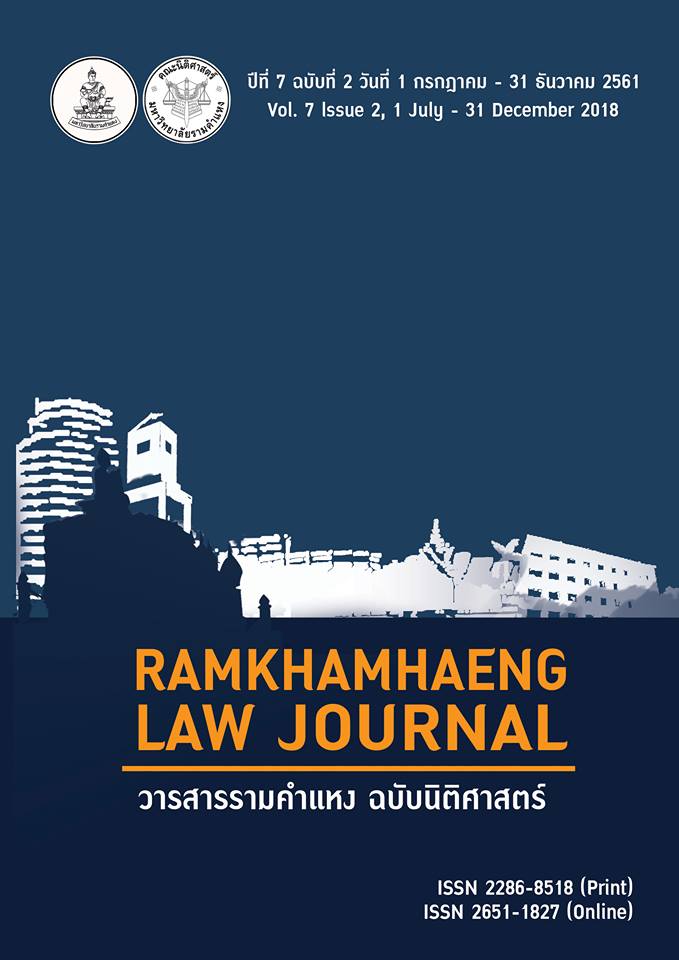Biopiracy and Access to Biological Resources: International Law Perspective
Main Article Content
Abstract
This article deals with the issue of biopiracy from the perspective of international law. It examines in detail the leading international instruments in this field, the Biodiversity Convention and the Bonn Guidelines that were adopted by the parties to the Convention to facilitate access to biological resources and to ensure the fair sharing of benefits from its access. It is noted that even though conservation of nature was one of the moving forces for international law in regard to biodiversity, the international law is now determined mainly by intellectual property considerations. The author attempts to examine the fundamental principles which lie at the foundation of the international law on biodiversity: patentability, ownership, access and distributive justice. He concludes that international law fails to give proper attention to the ethical concerns of traditional communities.
Article Details
References
BBC. Amazon moves to curb bio-pirates [Online]. Available URL: http://news.bbc. co.uk/ 1/hi/world/americas/212560.stm, 2016 (March, 26).
_______. Neem tree patent revoked [Online]. Available URL: http://news.bbc. co.uk/2/hi/science/nature/745028.stm, 2016 (March, 28).
Convention on Biological Diversity. Bonn Guidelines on Access to Genetic Resources and Fair and Equitable Sharing of the Benefits Arising out of their Utilization [Online]. Available URL: https://www.cbd.int/doc/publications/cbd-bonn-gdls-en.pdf, 2017 (October, 23).
Cornell Law School.35 U.S. Code § 271 - Infringement of patent [Online]. Available URL: https://www.law.cornell.edu/uscode/text/35/271, 2016 (March, 19).
Food and Agriculture Organization. International Undertaking on Plant Genetic Resources [Online]. Available URL: http://www.fao.org/wiews-archive/docs/ Resolution_8_83.pdf, 2017 (September, 21).
______. International Treaty on Plant Genetic Resources for Food and Agriculture [Online]. Available URL: http://www.fao.org/3/a-i0510e.pdf, 2017 (September, 25).
______. International Treaty on Plant Genetic Resources for Food and Agriculture: Countries Membership [Online]. Available URL: http://www. fao.org/plant-treaty/countries/membership/en/, 2017 (September, 25).
Franck, Thomas M. Fairness in international law and institutions. New York: Oxford University Press, 1995.
International Labour Organization. C169-Indigenous and Tribal Peoples Convention, 1989 (No. 169) [Online]. Available URL: https://www.ilo.org/dyn/normlex/en/f?p= NORMLEXPUB:12100:0::NO::P12100_ILO_CODE:C169, 2016 (August, 16).
Lewinski, Silke von. “Indigenous heritage and intellectual property: genetic resources, traditional knowledge and folklore.” Kluwer Law International (2008): 75.
Moyer, Henry K. “Patenting Neem and Hoodia: Conflicting decisions issued by the opposition board of the European Patent Office.” Biotechnology Law Report 27, 1 (2008): 1-10.
Shytov, Alexander. Thai Folktales and Law. Chiang Mai: Acts, 2004.
United Nations Treaty Collection. Chapter xxvii Environment [Online]. Available URL: https://treaties.un.org/pages/ViewDetails.aspx?src=TREATY&mtdsg_no=XXVII-8-b&chapter=27&lang=en, 2016 (May, 15).
Convention on Biological Diversity 1992.
Nagoya Protocol 2010.
UK Patent Act 1977.

